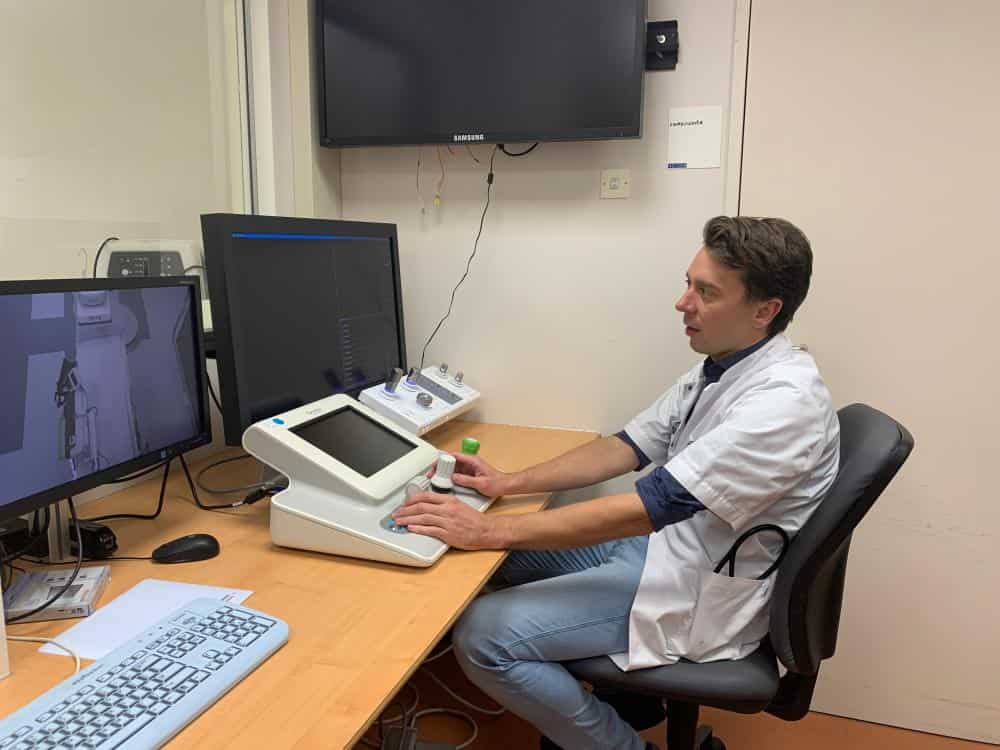
For the first time in the Netherlands, patients who need an angioplasty can be treated with a robotic arm. The UMCG is the first hospital to deploy this technique. This way, the procedure is done even more accurately and the cardiologist is less exposed to X-rays, says the hospital in a press release.
Angioplasty is a treatment that involves opening or dilating one of the heart’s blood vessels. To open or dilate a blood vessel, a short hollow tube of a few millimeters long is inserted. With the robot, this tube can be placed with the precision of one-third of a millimeter. “Technology has of course advanced considerably over the past few years, but this is a big step forward,” says Interventional Cardiologist Michael Dickinson, who recently started using the robotic arm.

Lead-heavy
The cardiologist normally stands right next to the patient and thus is in X-ray radiation all day. Protective clothing such as a lead apron weighs kilos and can cause physical discomfort. Even with protective clothing, a cardiologist receives about 7 to 8 microsieverts of radiation per procedure. With the new robotic arm, after inserting the line, the cardiologist can stand behind a protective lead wall and control the robotic arm with three joysticks from there.
Learning to work with a robotic arm took getting used to, but went quite quickly, according to Dickinson: “Normally you feel what you are doing with your fingertips. You miss that feeling when you use a robot, but it wasn’t too hard to learn. Perhaps because we already have very good hand-eye coordination due to the regular working method where we also look at the screen all the time.”
For the time being, emergency treatments are not yet eligible for the robot arm, as it takes at least ten minutes to prepare it for use. In the future, it is expected that more and more patients will be eligible for treatment with robotic arms. The cardiologists expect to have treated 100 patients with this new technique by next spring.

Selected for you!
Innovation Origins is the European platform for innovation news. In addition to the many reports from our own editors in 15 European countries, we select the most important press releases from reliable sources. This way you can stay up to date on what is happening in the world of innovation. Are you or do you know an organization that should not be missing from our list of selected sources? Then report to our editorial team.







